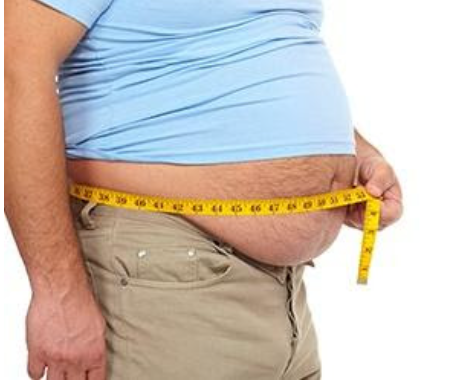If you’ve been told by your doctor that you need to monitor your blood pressure and cholesterol levels, chances are there is another number you’re keeping an eye on: your triglycerides. Triglycerides are a type of lipid (fat) in your blood, and having too much of it can increase your risk of heart disease.
Triglycerides are not the same thing as cholesterol. While both are a type of lipid that circulates in your blood, they do different things. Triglycerides provide your body with energy, while cholesterol is used to build cells and certain hormones.
How are Triglycerides Formed?
Every time you eat, your body converts any calories it doesn’t use immediately into triglycerides, which then get stored in your fat cells. In between meals, when your body senses you need more energy, these triglycerides are released into your blood stream. If you are someone who regularly eats more calories than you burn – particularly empty calories that come in carbohydrates and fats – it is likely you have high triglyceride levels.
Your doctor may have performed a simple blood test to see whether or not your triglycerides fall into a healthy range. This is a routine part of a cholesterol test (sometimes called a lipid panel or lipid profile.) If you’re over 40 and have not had this test performed, talk to your doctor about checking your levels.
Normal range is considered less than 150 milligrams per deciliter (mg/dL), or less than 1.7 millimoles per liter (mmol/L). Borderline high is considered 150 to 199 mg/dL (1.8 to 2.2 mmol/L), high is from 200 to 499 mg/dL (2.3 to 5.6 mmol/L), and very high is 500 mg/dL or above (5.7 mmol/L or above).
Why Should You Lower Your Triglyceride Levels?
High triglycerides contribute to the hardening and thickening of the artery walls – also known as atherosclerosis — which increases the risk of stroke, heart attack and heart disease. Extremely high triglycerides, levels above 1000 mg/dL (11.29 mmol/L) — can also cause acute pancreatitis.
High triglycerides are often a sign of other conditions that can increase your risk of heart disease and stroke. For instance, those who are obese, suffer from metabolic syndrome (a cluster of conditions that includes too much fat around the waist, high blood pressure, high triglycerides, high blood sugar and abnormal cholesterol levels), diabetes and hypothyroidism are at an increased risk. High triglycerides can also be a side effect of taking medications such as beta blockers, birth control pills, diuretics or steroids.
6 Ways to Lower Your Triglycerides
Now that you know having high triglyceride levels is bad for heart health, here are some lifestyle changes you can make to bring your levels down:
Lose Weight
If you’re overweight, the very first thing you should do is lose those extra pounds. Even losing just 5 to 10 percent of your body weight can reduce your triglyceride levels by roughly 20%. That means if you weigh 200 pounds you would need to lose just 10 to 20 pounds.
Cut Out Sugar
The American Heart Association recommends that only 5% of your daily calories come from added sugars. This means no more than 150 grams (9 teaspoons) for men and 100 grams (6 teaspoons) for women per day.
Want to know a simple (although maybe not so easy) way to cut down on your sugar intake? Stop drinking soda and sugar-laden coffee and sports drinks. These are typically the biggest sources of “hidden” sugar in the American diet.
Focus on Fiber
As I mentioned at the beginning of the article, people who consume high-caloric foods like refined carbohydrates and fats are at the most risk of high triglycerides and heart disease. One way to cut back on these kinds of foods is to focus on eating fiber-rich foods such as vegetables, fruits and whole grains.
Move Your Body
Getting at least 30 minutes of moderate-intensity exercise most days of the week is one of the most important things you can do to bring your triglyceride levels down. And, as a bonus, exercise is also an important part of keeping your weight under control.
Limit Your Consumption of Alcohol
The American Heart Association recommends that people with very high triglycerides avoid alcohol entirely as it can exacerbate the problem.
Add Omega-3 Fatty Acids to Your Diet
Numerous studies have found that including omega-3 fatty acids to your diet can help lower triglycerides. Try to incorporate fatty fish like salmon, herring, sardines, lake trout and albacore tuna into your diet at least twice a week.
If you already have high triglycerides, you can take omega-3 capsules to supply the extra boost that food alone can’t provide. Even if you don’t have high triglycerides, I think omega-3 supplementation is something you should be doing anyway. But it’s important that you choose the right supplement to ensure you gain all of the health benefits.
Look for a supplement that offers:
- high potency (you don’t want to have to swallow more capsules than necessary!)
- contains the right amount of EPA and DHA
- is from a pure source (many fish nowadays contain heavy metals like mercury and other toxins)
- is fresh (oxidation is common in supplements of a lesser quality)
- and is bio-available so our bodies can absorb the nutrients and put them to work.
Oh, and they should also taste great – I mean, do you really want to be burping up fish breath all day? I sure don’t!
Learn about a supplement that ticks all of these boxes AND MORE!
 Validating...
Validating... 






2 Comments